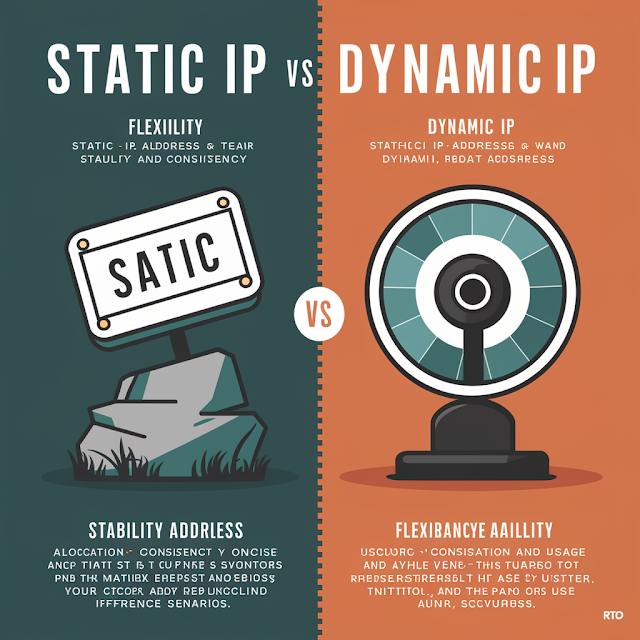What is The Difference Between Static IP And Dynamic IP With Example ?
What is The Difference Between Static IP And Dynamic IP With Example ?
A static IP address remains constant, while a dynamic IP address can change periodically.
Here's a breakdown with examples:
1. Static IP Address:
A static IP address is manually configured for a device and does not change over time.
Example: A web server hosting a website might have a static IP address assigned to it. This ensures that users can always access the server at the same address, making it easier for clients to find the server consistently.
2. Dynamic IP Address:
A dynamic IP address is assigned by a DHCP (Dynamic Host Configuration Protocol) server and can change each time the device connects to the network.
Example: Your home router typically assigns dynamic IP addresses to devices connected to your Wi-Fi network. Every time your computer or smartphone connects to the Wi-Fi, it might receive a different IP address from the router's pool of available addresses.
In essence, static IPs are used when a consistent address is necessary, such as for servers, whereas dynamic IPs are more commonly used for devices that do not require a fixed address and where there are more devices than available static IPs.
Here are some additional details on static and dynamic IP addresses:
1. Static IP Address:
Typically used for servers, printers, and other devices that need to be easily accessible and always reachable from the same address.
Provides stability and predictability in network configurations, as the IP address remains constant.
Commonly used for services like hosting websites, running email servers, or accessing remote devices securely.
Example:
An organization may assign a static IP address to its mail server to ensure that email clients can reliably connect to it without needing to update configurations each time the IP changes.
2. Dynamic IP Address:
Assigned automatically by a DHCP server within a network.
Allows for efficient utilization of IP addresses within a network by dynamically allocating addresses to devices as they connect.
Useful in environments with a large number of devices that don't require constant accessibility from the same IP address.
Example:
In a coffee shop with public Wi-Fi, dynamic IP addressing allows multiple customers to connect their devices without requiring a large pool of unique static IP addresses. As each device connects and disconnects, the DHCP server assigns and reclaims IP addresses as needed.
In summary, static IP addresses offer stability and consistency, while dynamic IP addresses provide flexibility and efficient use of available addresses, especially in networks with a high turnover of connected devices. The choice between static and dynamic addressing depends on the specific requirements and characteristics of the network and its devices.
